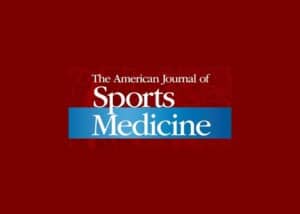
Background:
Platelet-rich plasma (PRP) and bone marrow concentrate (BMC) are orthobiologic therapies with numerous growth factors and other bioactive molecules. Before the clinical utility of PRP and BMC is optimized as a combined therapy or monotherapy, an improved understanding of the components and respective concentrations is necessary.
Purpose:
To prospectively measure and compare anabolic, anti-inflammatory, and proinflammatory growth factors, cytokines, and chemokines in bone marrow aspirate (BMA), BMC, whole blood, leukocyte-poor PRP (LP-PRP), and leukocyte-rich PRP (LR-PRP) from samples collected and processed concurrently on the same day from patients presenting for elective knee surgery.
Study Design:
Cross-sectional study; Level of evidence, 3.
Methods:
Patients presenting for elective knee surgery were prospectively enrolled over a 3-week period. Whole blood from peripheral venous draw and BMA from the posterior iliac crest were immediately processed via centrifugation and manual extraction methods to prepare LR-PRP, LP-PRP, and BMC samples, respectively. BMA, BMC, whole blood, LR-PRP, and LP-PRP samples were immediately assayed and analyzed to measure protein concentrations.
Results:
BMC had a significantly higher interleukin 1 receptor antagonist (IL-1Ra) concentration than all other preparations (all P\.0009). LR-PRP also had a significantly higher IL-1Ra concentration than LP-PRP (P = .0006). There were no significant differences in IL-1Ra concentration based on age, sex, body mass index, or chronicity of injury in all preparations. LR-PRP had significantly higher concentrations of platelet-derived growth factor AA (PDGF-AA) and PDGF-AB/BB than all other preparations (all P \ .0006). LR-PRP also had significantly higher concentrations of matrix metalloproteinase 1 (MMP-1) and soluble CD40 ligand than all other preparations (all P \ .004). LP-PRP had significantly higher concentrations of MMPs, namely MMP-2, MMP-3, and MMP-12, than all other preparations (all P \ .007).
Conclusion:
BMC is a clinically relevant source of anti-inflammatory biologic therapy that may be more effective in treating osteoarthritis and for use as an intra-articular biologic source for augmented healing in the postsurgical inflammatory and healing phases, owing to its significantly higher concentration of IL-1Ra as compared with LR-PRP and LP-PRP. Additionally, LR-PRP had a significantly higher concentration of IL-1Ra than LP-PRP. In cases where increased vascularity and healing are desired for pathological or injured tissues, including muscle and tendon, LR-PRP may be optimal given its higher overall concentrations of PDGF, TGF-b, EGF, VEGF, and soluble CD40 ligand.
